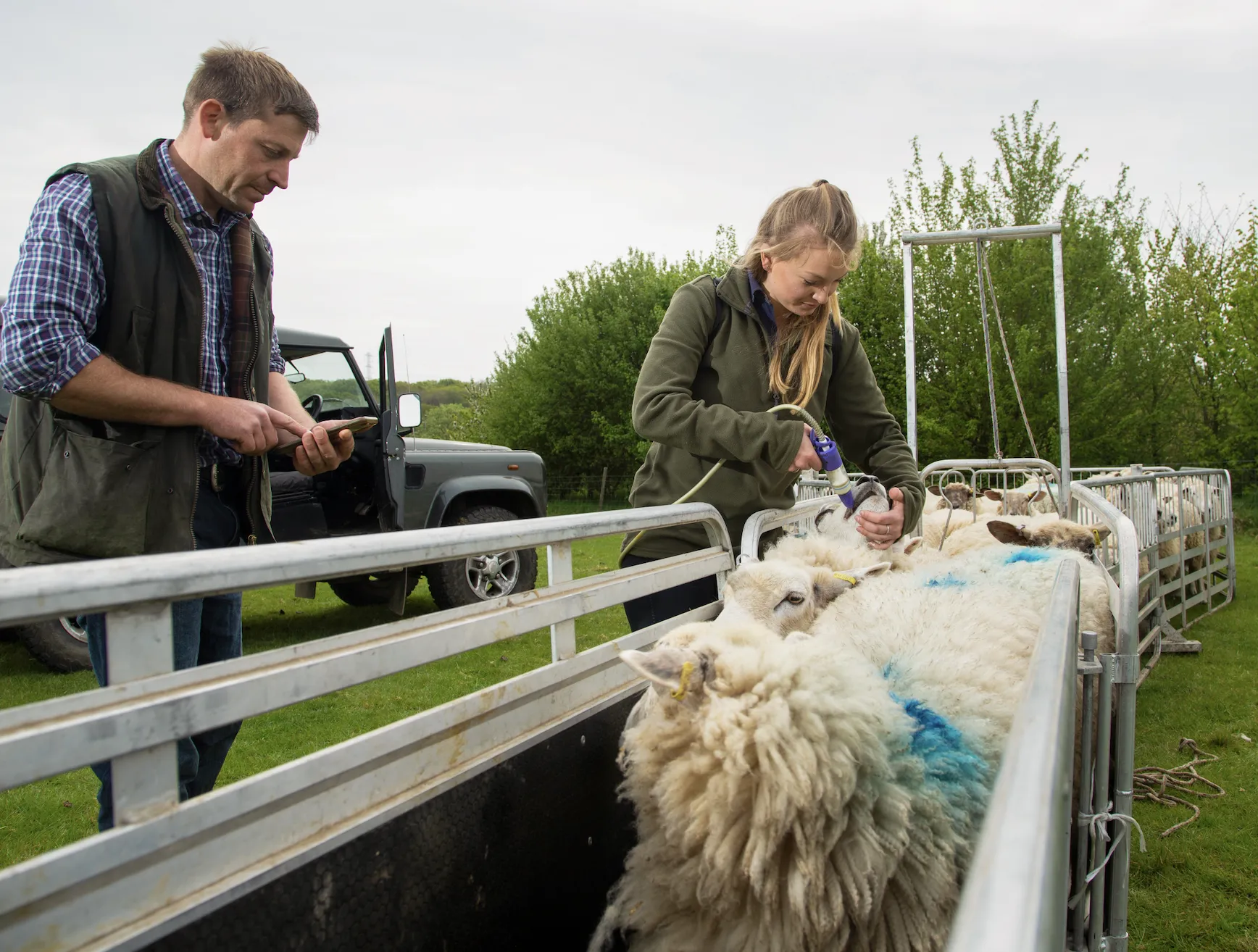🧪 What Is Sheep Drenching and Why Do It?
Drenching refers to administering liquid treatments directly into a sheep’s mouth using a drench gun. It's commonly used for:
- Worm control (gastrointestinal worms)
- Liver fluke treatment
- Mineral supplementation (e.g. cobalt, selenium)
- Coccidiosis prevention in lambs
Is drenching the same as worming? Not exactly. Worming is one type of drenching — others may be for fluke or minerals. So worming is a type of drenching, but not all drenching is worming.
📅 When Should You Drench Sheep in the UK?
There’s no one-size-fits-all answer. Timing depends on age, season, pasture burden, fluke risk, and flushing cycles for ewes.
- Worming: Often done after weaning, again pre-tupping, and sometimes pre-lambing
- Fluke drench: Typically needed in autumn and winter, based on regional risk
- Mineral drench: Often pre-tupping and pre-lambing to boost fertility and vigour
- First lamb drench: Around 4–6 weeks, or when pasture contamination is likely
🔁 How many times a year should sheep be drenched?
Most commercial farms drench 2–4 times a year, but it's increasingly advised to drench only when needed, based on FEC (faecal egg counts) and performance data.
🚩 What Happens if You Don’t Drench Sheep?
Without drenching, sheep can:
- Suffer from weight loss, scouring, or ill-thrift
- Be at risk of fluke-related liver damage
- Perform poorly at tupping or lambing
- Carry heavy worm burdens that affect pasture and lambs
But too much drenching is no better — it can cause resistance, waste money, and even harm the sheep if you overdose.
💡 What Is the Best Way to Drench Sheep?
✔️ Use a calibrated drench gun
✔️ Dose to the heaviest in the group (not average)
✔️ Restrain sheep securely to avoid injury
✔️ Insert the nozzle over the tongue to ensure swallowing
✔️ Record treatments for each group in FlockFinder
⏱️ How long does it take to work?
Most wormers begin working within 24–48 hours.
🚫 Should sheep be on an empty stomach?
Some drenches (like white drenches) work better when sheep haven’t grazed for 12 hours, while others are fine post-feeding. Check the label each time.

🚜 After Drenching: What’s Next?
- Withhold from pasture: Many drenches recommend 24–48 hours off fresh grazing to reduce resistance spread.
- Move to clean pasture if possible, especially for lambs.
- Track results: With FlockFinder, you can monitor weight gains, spot poor responders, and update medical logs.
💬 Real farmer insight: One user grouped lambs by weight band post-drench using FlockFinder’s livestock table, then applied labels for follow-up FEC testing. It helped them avoid blanket treatments next round and saved on labour and cost.
⚖️ Pros and Cons of Drenching Sheep
Pros:
- ✅ Improves flock health and growth rates
- ✅ Controls parasite loads and fluke
- ✅ Boosts ewe fertility with mineral support
- ✅ Enables better pasture rotation
Cons:
- ⚠️ Can lead to resistance if overused
- 💷 Adds to labour and treatment costs
- 🧪 Risk of overdosing without accurate weights
- 📉 Ineffective if timing or technique is off
👉 That’s why we say: drench with data, not on instinct.
🧭 Drenching with FlockFinder: Smarter, Not Harder
Drenching days can be hectic — but they’re also a golden opportunity to:
- Log treatments with batch numbers and notes
- Track lamb growth pre- and post-drench
- Mark animals for follow-up or testing
- Schedule mineral top-ups ahead of tupping
- Bulk label groups for pasture moves or rechecks
With FlockFinder, you can record and plan your drenching cycles with precision, saving time and improving outcomes.
✅ Conclusion: Treating, Tracking, and Timing it Right
Drenching isn't just a job — it's a key pillar of productive flock management. Whether you’re worming lambs or boosting ewes with minerals, the when, why, and how matters.
Plan ahead, dose properly, and track everything. With FlockFinder, your flock's drenching history, health status, and performance data are just a click away — so you're always ready for the next step.





